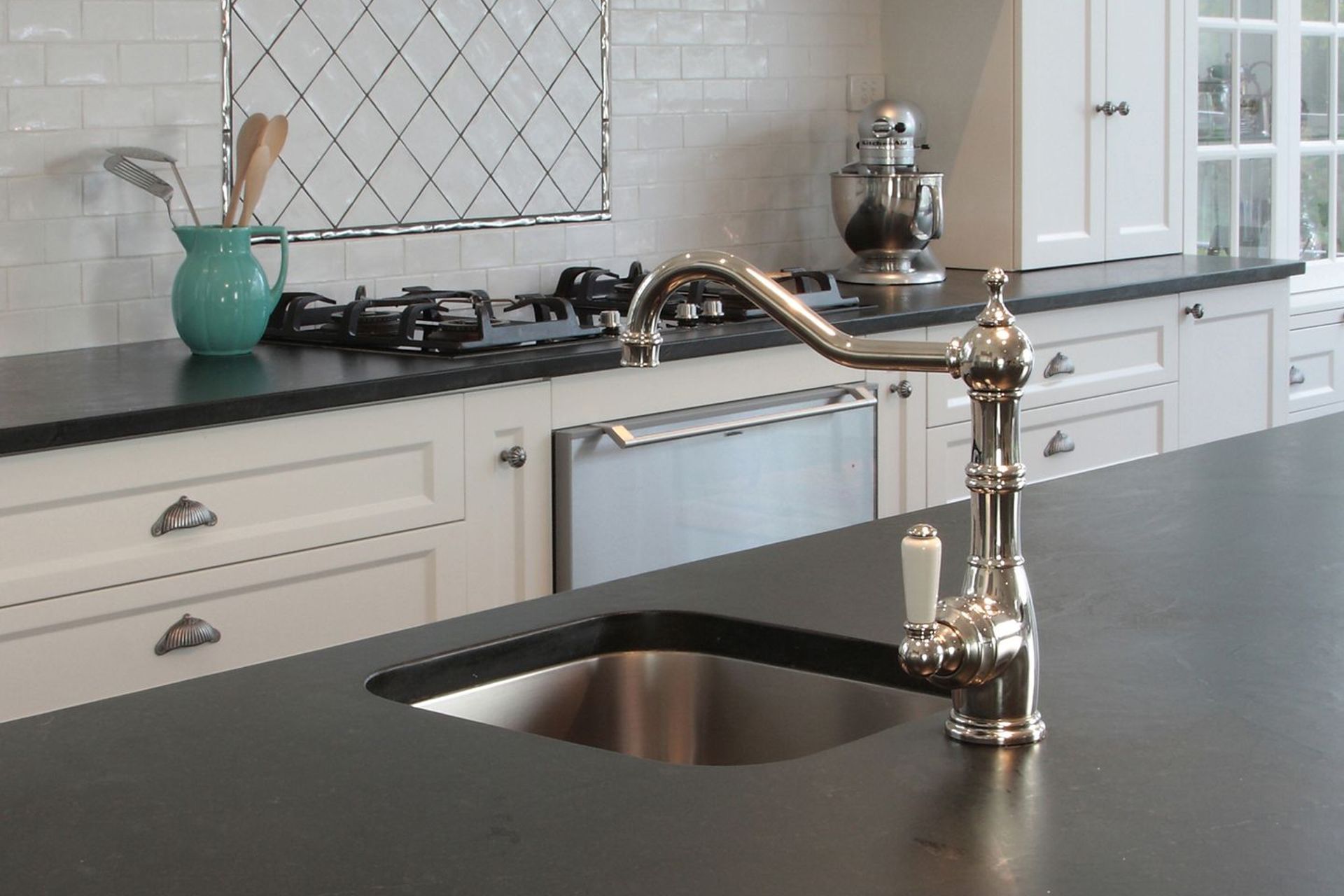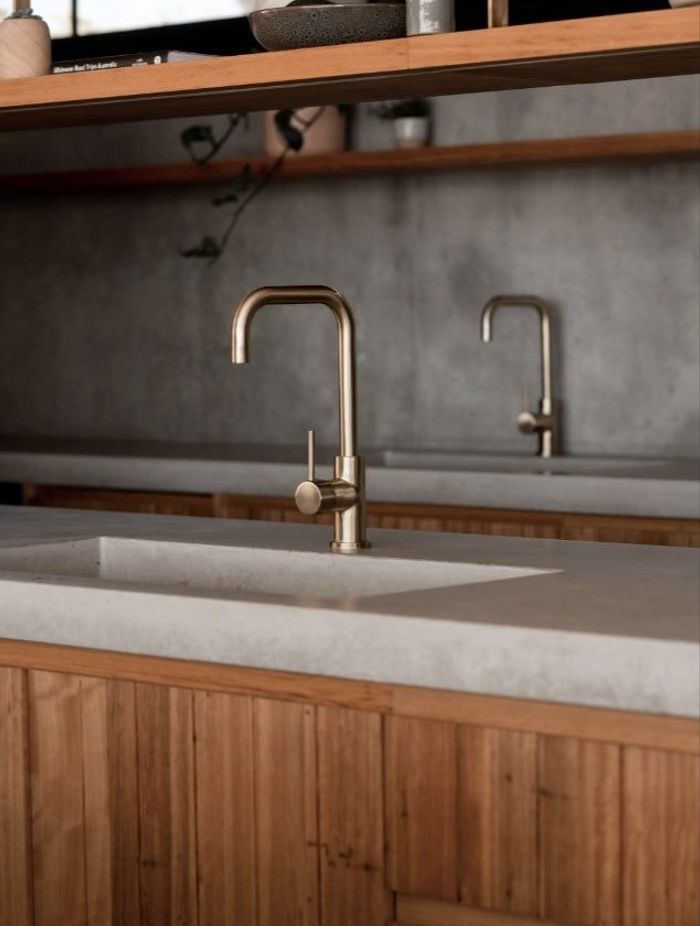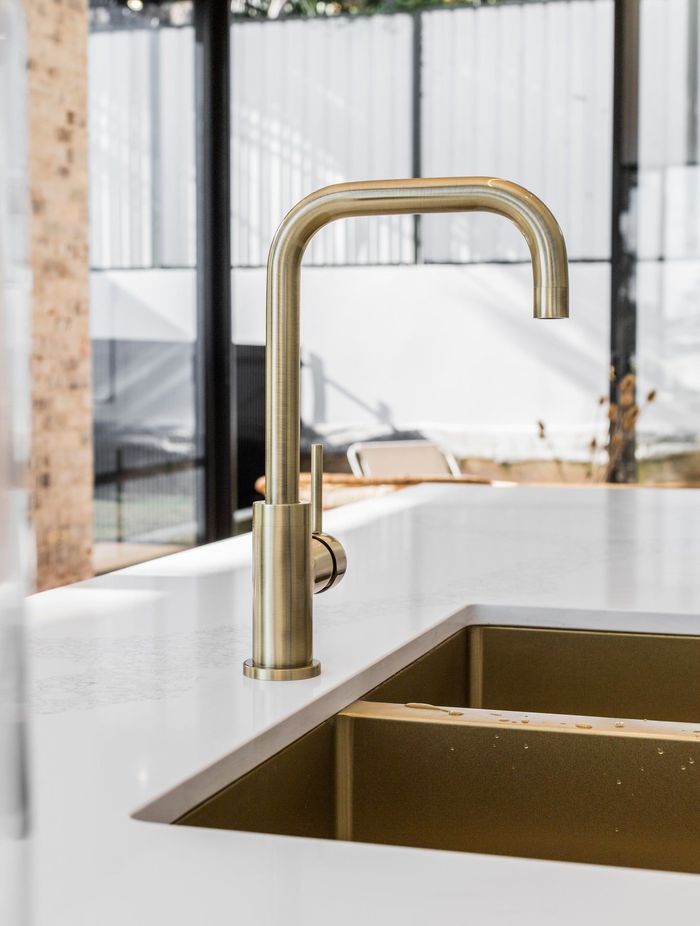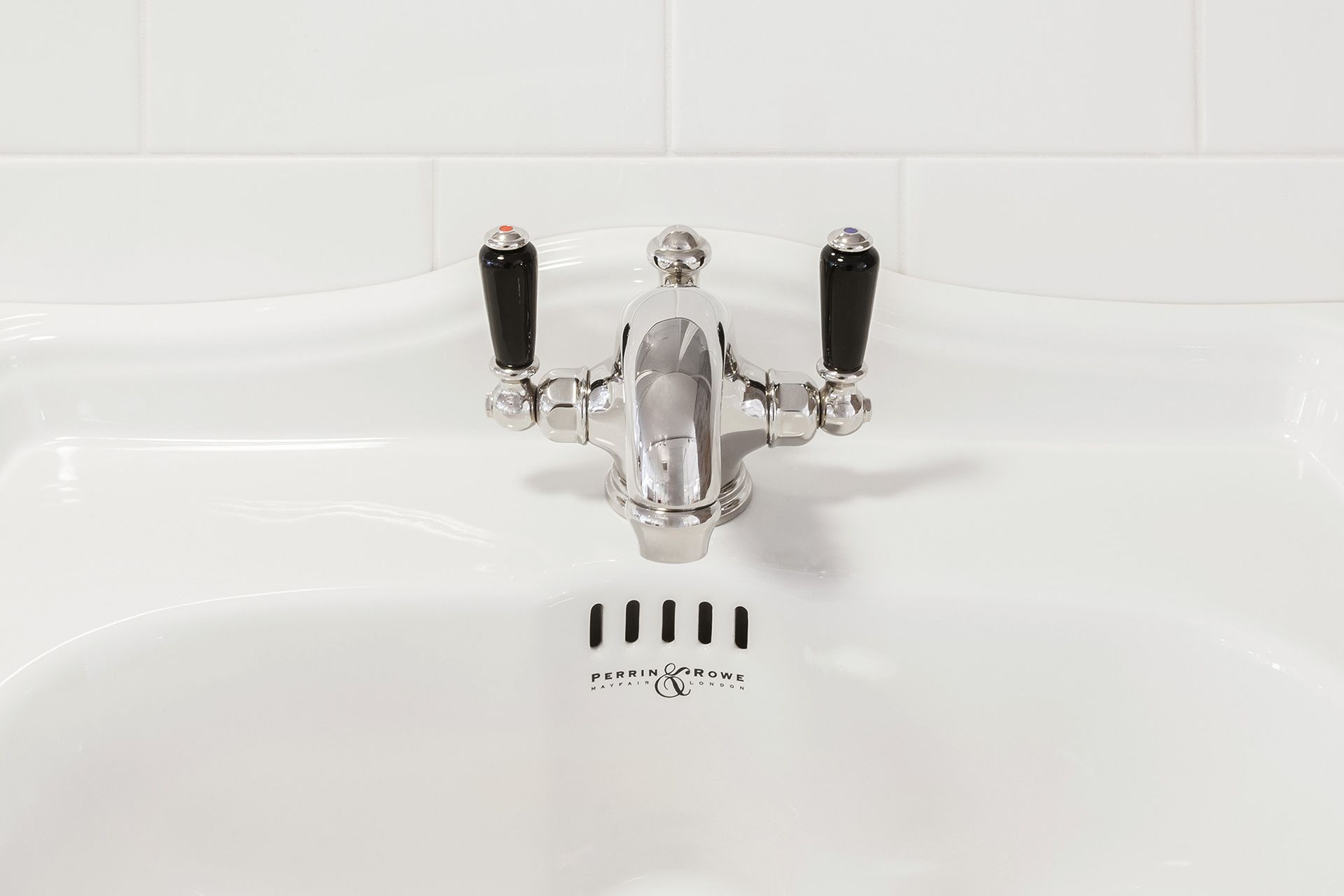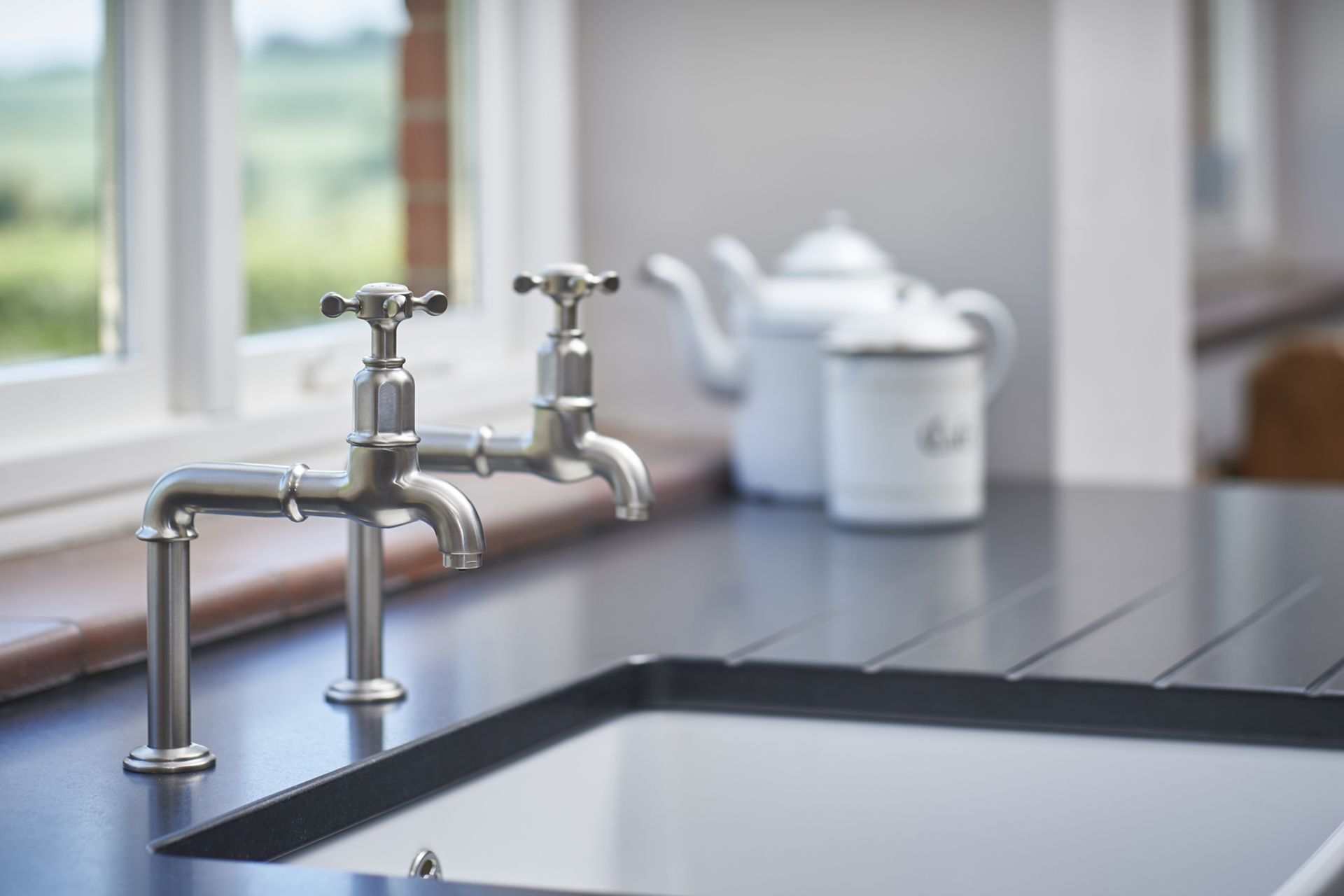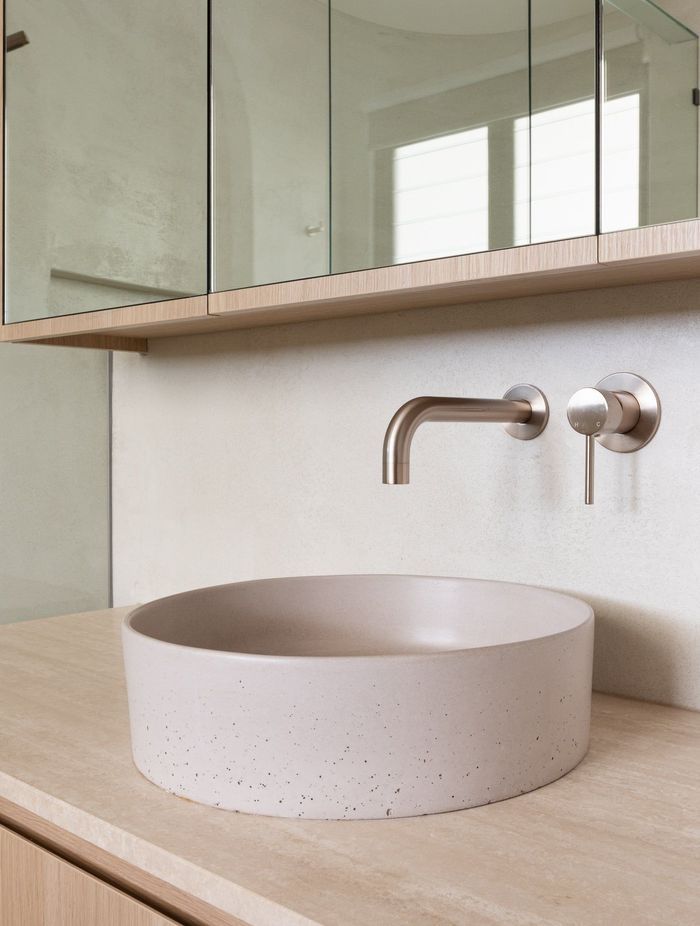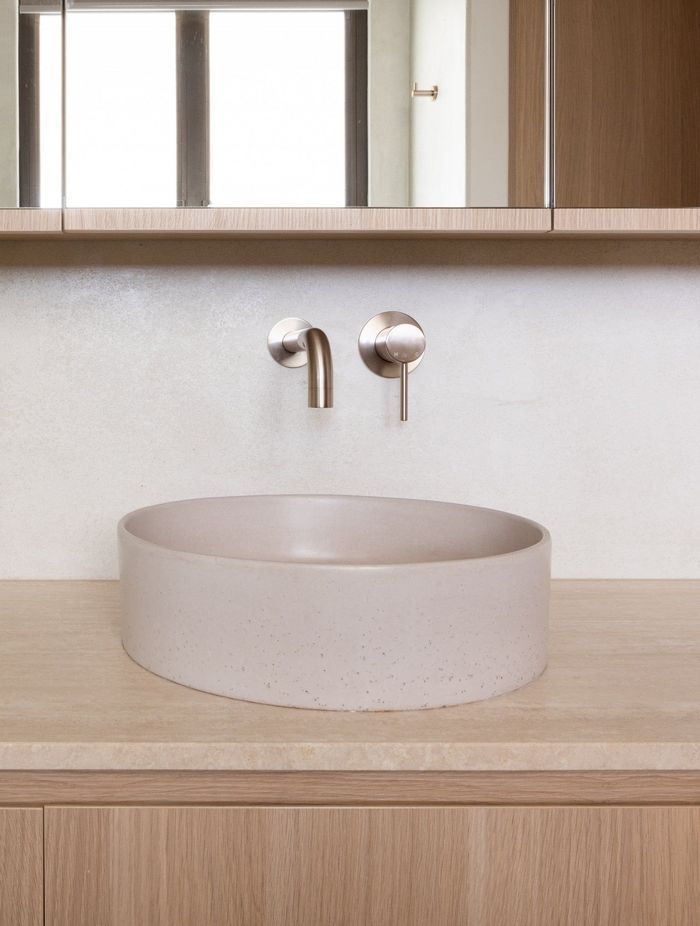6 of the most popular types of taps used in Australia in 2024
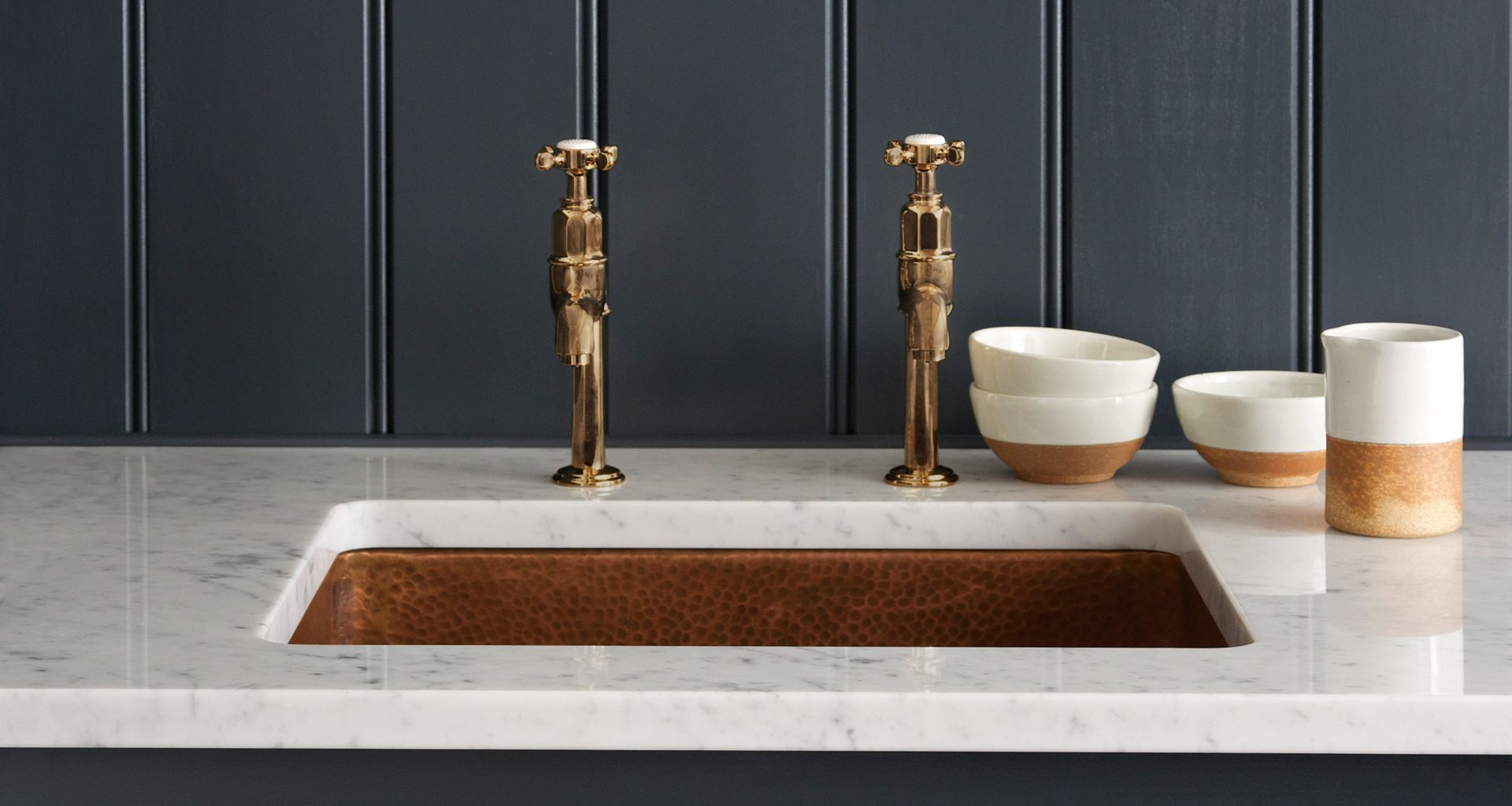
There are plenty of different types of taps available for available for different parts of your home. Some are ideal for kitchens or laundry rooms, others for bathrooms, and a few are designed specifically for outdoor use. In this overview, we'll explore the different tap types, highlight their benefits and drawbacks, and identify some of their common applications.
1. Mixer taps
Mixer taps are prevalent in modern homes because of their efficient design. While several mixer tap types are available, most typically have two inlets: one for hot and one for cold water, which merge to release water from a single spout. Adjusting the handles allows users to mix hot and cold water to the desired temperature.
Advantages
Temperature is easy to adjust
A primary advantage of mixer taps is the ease of adjusting water temperature. With separate handles for hot and cold water (or a single lever), users can swiftly reach their desired temperature.
Slick contemporary design
Mixer taps offer sleek designs suitable for modern bathroom or kitchen aesthetics. Their single spout and minimalist controls create a clean, streamlined appearance.
Disadvantages
Installation can be complex
While traditional taps only require separate connections for hot and cold water, mixer taps may involve a more intricate installation process, especially if the plumbing system isn't already set up for them. This might lead to higher installation costs or a need for professional assistance
Can be prone to leaks
All taps are susceptible to leaks over time, but mixer taps, with their additional components and connections, might be slightly more prone to leaking, especially if not properly installed or maintained.
Common applications
Modern bathrooms: In bathrooms, basin mixer taps allow users to wash their hands or face with water at their preferred temperature without having to manually mix hot and cold water. They also lend a modern touch to bathroom designs - particularly when they appear as shiny chrome taps, or polished brass taps.
Kitchens: Kitchen mixer taps are valuable for tasks like washing dishes or rinsing food. Being able to quickly adjust the water temperature can be especially handy when switching between tasks like rinsing vegetables and washing greasy pans.
Related article: Kitchen sink sizes: tips on choosing the right fit
2. Monobloc taps
Monobloc tap is designed to be mounted on a sink or basin with a single hole. It has one spout but can have one or two handles. If it has a single handle, it will control both hot and cold water. The term "monobloc" refers to the way the tap is mounted, with all the components fitting through a single hole, rather than the number of handles or water sources it controls.
Advantages
Space-saving: Monobloc taps, due to their single hole installation, often require less countertop or basin space compared to traditional separate taps.
Efficient temperature regulation: Whether they have one or two handles, monobloc taps allow for more straightforward temperature adjustments since both hot and cold water flow from a single spout.
Disadvantages
Limited to basins/sinks with a single hole: Monobloc taps need a single-hole basin for installation. Replacing traditional taps with a Monobloc may require sink modifications, potentially adding costs and inconvenience.
Can be tricky to fix: Due to their compact design, Monobloc taps can be harder to fix. Issues often mean replacing the entire tap rather than a single component.
Common applications
En-suite bathrooms: Monobloc taps are suitable for en-suite bathrooms where convenience is key. Their design allows users to quickly adjust water temperature, making them ideal for the quick routines commonly associated with these adjacent bedroom-bathroom setups.
Kitchens: For kitchens, the ease of use offered by Monobloc taps can be invaluable. Whether rinsing vegetables, filling pots, or washing hands, the ability to quickly adjust water temperature with a single hand is highly beneficial. In kitchens, monobloc taps can also appear as various ball tap types, highlighted by their round, ball shaped top.
3. Pillar taps
Pillar taps embody the classic tap design with separate controls for hot and cold water. Typically sold in pairs, each pillar tap serves one water source: cold or hot. Their straightforward design makes them favoured in older settings or where a vintage look is sought. Unlike mixer or Monobloc taps, they dispense water separately. Pillar taps referred to as compression washer taps.
Advantages
Separate control of hot and cold water: Pillar taps offer separate controls, useful when drawing exclusively cold or hot water without mixing.
Simpler design, easier to fix: Their basic design often means easier repairs. Without combined water flow intricacies, components are more accessible, making fixes straightforward.
Disadvantages
Takes up more space: Pillar taps, being a pair, need more installation space, which might be an issue in compact areas with limited countertop or sink space.
Can be considered outdated in style: Modern interiors favour sleek fixtures, making the dual-tap design of pillar taps seem old-fashioned in some settings.
Common applications
Traditional bathrooms: For bathrooms that feature classic or vintage decor, pillar taps can perfectly complement the design ethos, reinforcing an old-world charm.
Retro kitchens: In kitchens that embrace a retro or nostalgic design, pillar taps can act as a stylish addition.
Related article: The cost of replacing bathroom taps in Australia
4. Wall mounted taps
Wall-mounted taps ascend directly from the wall, offering a suspended water source above the sink or basin. This elevates the aesthetic of the space, giving it a distinct, architectural edge while also ensuring the counter remains free from any hardware.
Advantages
Space-saving: Being affixed directly to the wall means that the entirety of the basin or countertop is usable, a boon especially in compact areas where every inch counts.
Sleek aesthetics: Wall-mounted taps are emblematic of cutting-edge design, providing spaces with a sleek, streamlined look that feels both modern and minimalist.
Disadvantages
Can be complex to install: Mounting taps onto walls demands a more nuanced installation, often necessitating alterations to the wall structure and a deeper understanding of the plumbing behind the scenes.
Maintenance access: When it comes to repair or part replacement, the embedded nature of the plumbing for wall-mounted taps can present hurdles, making some tasks more intricate than those for deck-mounted alternatives.
Common applications
Smaller bathrooms: In spaces where counter real estate is limited, wall-mounted taps ensure you can use the entirety of your sink or basin without tap fixtures getting in the way.
Compact bathrooms: In bathrooms with limited space, wall-mounted taps are an efficient choice. They free up floor and basin space, making the room appear less cluttered while still providing the essential functionality of filling up a bathtub or basin.
5. Floor mounted taps
A floor-mounted tap, also referred to as a freestanding tap, stands independently and is anchored directly to the bathroom floor. It is often used alongside freestanding bathtubs, offering a contemporary and elegant design solution. The plumbing for these taps is hidden beneath the floor, providing a clean and minimalist aesthetic.
Advantages
Elegant design: Floor-mounted taps offer a sophisticated and modern touch to any bathroom, making them a popular choice for luxury and contemporary bathrooms.
Flexible placement: They can be positioned anywhere around a freestanding tub, offering flexibility in design and layout, especially when compared to wall-mounted taps.
Disadvantages
Installation is complex and can be expensive: The installation process can be more complex and potentially costlier than traditional taps, given that plumbing needs to be routed beneath the floor.
Can be difficult to maintain: Due to their design, floor-mounted taps can sometimes be harder to maintain or repair, as accessing the plumbing might require lifting floor tiles or other intrusive measures.
Common applications
Luxury bathrooms: Given their chic appearance, they're often found in upscale homes, spas, and high-end hotel suites
Open bathrooms: In bathrooms with spacious or open designs, a floor-mounted tap can serve as a focal point or centerpiece.
6. Bib taps
Bib taps are traditional taps that are often seen in older homes or outdoor areas. The name comes from the bib-like shape where the water is dispensed. They typically have a spindle mechanism which controls the water flow.
Advantages
User-friendly: Bib taps operate on a basic on-and-off mechanism, eliminating the need to fiddle with multiple controls or settings. This makes them ideal for settings where users of various age groups or abilities might need to access water, like public parks or communal areas.
Built to last: The design of bib taps often involves fewer movable parts compared to modern tap designs. This reduction in components can translate to fewer points of potential failure, making bib taps less prone to leaks or wear over time, especially when made from quality materials like brass or stainless steel.
Disadvantages
Separate installation required: Since bib taps are often individual units for either cold or hot water, you might need two separate installations if both cold and hot water sources are required.
Lack of modern features: Being traditional in design, bib taps often lack the advanced features found in contemporary taps, such as water-saving aerators or swivel spouts for enhanced reach and convenience.
Common applications
Garden and outdoor areas: Bib taps are frequently installed outdoors for tasks like watering plants, cleaning tools, or filling buckets. Their durable design can withstand various weather conditions.
Utility rooms and workshops: In homes or establishments, bib taps are commonly found in utility rooms or workshops where a simple and robust water source is needed for tasks such as cleaning up or filling containers.
Some impressive taps to consider
Navigating through the variety of taps available might seem overwhelming, but understanding their basic features and functions helps. Whether you're looking for modern bathroom taps or stylish kitchen taps, there's a tap fit for every need. As you choose, think about what works best for your space and how it will be used. With a bit of research and consideration, you'll find the right tap that complements your home perfectly.
Related article: Different types of taps for bathrooms - a complete guide

